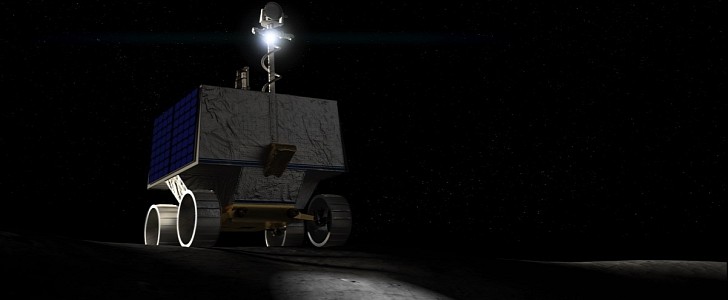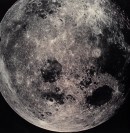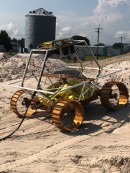Exploring the Moon was one of the biggest challenges for space scientists worldwide, but the Americans set a foot there first and are trying to keep that edge with more research about Earth's natural satellite.
Drilling on Earth is familiar, but doing that on a different planet is entirely different. In 2023, NASA wants to land the Artemis rover next to Nobile Crater on the Moon. The Volatiles Investigating Polar Exploration Rover (VIPER) will travel there with a SpaceX Falcon-Heavy rocket in a mission to explore the surface and the subsurface for water and other resources.
The Moon's South Pole is known as one of the coldest places in our solar system, and this is one of the reasons why it wasn't explored yet. Other lunar expeditions provided enough data for the scientists to conclude that they might find ice on the permanently shadowed areas of the Moon, near the poles.
Thomas Zurbuchen, associate administrator for science at NASA Headquarters, said that "Once on the lunar surface, VIPER will provide ground truth measurements for the presence of water and other resources at the Moon's South Pole, and the areas surrounding Nobile Crater showed the most promise in this scientific pursuit."
That crater was formed through the impact with another, smaller celestial object and is shadowed most of the time. Moreover, it is surrounded by other small shadowed craters where the scientists believe that VIPER can find ice and other resources.
NASA's scientists chose the landing site near the Nobile Crater since the rover could charge its solar panels in a nearby area. These panels will provide the heat required to stay warm during its 100-day journey. VIPER is not the first rover that landed on the Moon. The Russians sent an exploration module named Lunokhod 1 in 1970 that lasted almost a year on the Moon's surface, but it was remote-controlled from Earth.
The Moon's South Pole is known as one of the coldest places in our solar system, and this is one of the reasons why it wasn't explored yet. Other lunar expeditions provided enough data for the scientists to conclude that they might find ice on the permanently shadowed areas of the Moon, near the poles.
Thomas Zurbuchen, associate administrator for science at NASA Headquarters, said that "Once on the lunar surface, VIPER will provide ground truth measurements for the presence of water and other resources at the Moon's South Pole, and the areas surrounding Nobile Crater showed the most promise in this scientific pursuit."
That crater was formed through the impact with another, smaller celestial object and is shadowed most of the time. Moreover, it is surrounded by other small shadowed craters where the scientists believe that VIPER can find ice and other resources.
NASA's scientists chose the landing site near the Nobile Crater since the rover could charge its solar panels in a nearby area. These panels will provide the heat required to stay warm during its 100-day journey. VIPER is not the first rover that landed on the Moon. The Russians sent an exploration module named Lunokhod 1 in 1970 that lasted almost a year on the Moon's surface, but it was remote-controlled from Earth.














